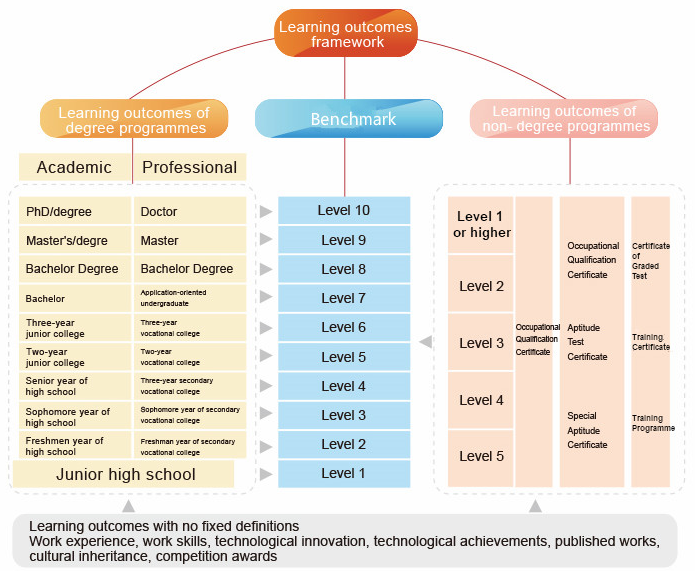A learning outcomes framework is a common reference point for all types of learning outcome accreditation, accumulation, and transfer in the continuing education field. It is a commonly practiced international qualification framework. Its relevant standards and norms ensure the transparency, comparability, and transferability of learning outcomes.
At present, the learning outcomes framework is divided into ten grades, the first being the lowest and the tenth being the highest. The performance characteristics of each grade are described by a set of learning results indicators. According to Chinese national economic and industry classification standards, the learning outcomes in the framework are divided into 20 industries. By analysing different forms of learning outcomes, said learning outcomes can also be divided into three types: degree education learning outcomes, non-degree education learning outcomes, and learning achievements with no fixed definitions.

General Indicators of the Learning Outcomes Framework
The performance characteristics of each grade of learning results in the learning outcomes framework are described by a set of learning results indicators. These indicators indicate the level of knowledge, skills, and abilities (namely the ability to apply knowledge and skills, or “abilities” in short) represented by every learning outcome at its corresponding grade. Describing the learning outcomes by their respective level indicators helps to determine at which level they are located.
The indicators have three dimensions: knowledge, skills, and abilities. Knowledge describes the factual, technical, and theoretical knowledge acquired as part of a learning outcome; skills describes cognition, technology, and skills such as communication or expression achieved through the learning outcome; ability describes the initiative, judgment, and responsibility shown in using knowledge and skills demonstrated by the learning outcome.